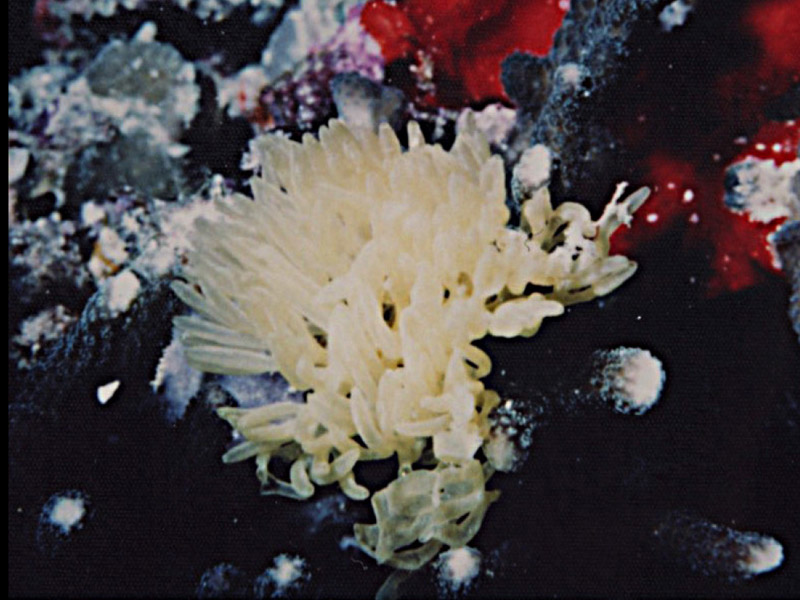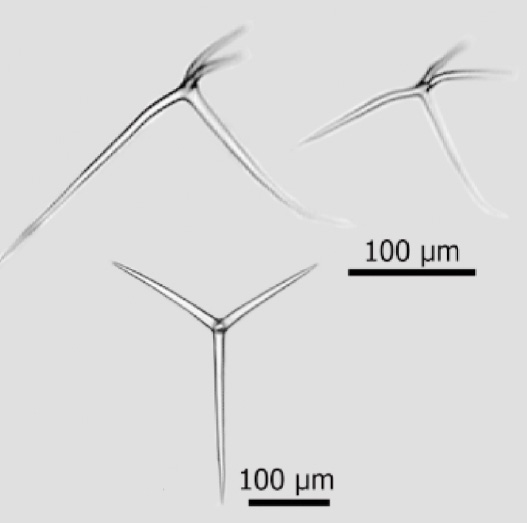Morphological description (show/hide)
| Aborescent, bushy, with single, delicate tubes branching dichotomously and dichotomously from a few ccntral tubes. The central, proximal tube is larger than distal tubes, and tubes ramify only in the lower part of the sponge bush. Distal parts of the tubes are mostly longer than the ramified parts. Bushy, single tubes are approximately 2mm diameter. Two tubes sometimes fuse together at their distal end, just below the osculum. Size ofthe sponge bush is <5cm. | | bright yellow | | brownish beige | | One naked osculum occurs on top of each tube, with s light ly smaller diameter than the tube itself. When two tubes are fused together, one osculum is located at the distal end of the fused tubes, just above their point of fusion. | | Soft, delicate, easily torn. | | Smooth | | The skeleton consists only of sagittal tetractines, which are tangentially arranged with their parasagittal facial plane of the tetractines forms the wall of tubes, with one (the longer) ray of the basal triradiate system pointing in the direction of the growth axis (i.e. directed towards the central tube). Actines of tetractines overlap, with no more than three stacked above each other to form the tube wall, 15-20 um thick. The curved, free actines of tetractines protrude into the tube, and sometimes a tent like tissue was observed over the tips of the free actines inside the tube. Tips of free actines are bent in the direction of the osculum. arranged, parasagittal facial plane of the tetractines forms the wall of tubes, with one (the longer) ray of the basal triradiate system pointing in the direction of the growth axis (i.e. directed towards the central tube). Actines of tetractines overlap, with no more than three stacked above each other to form the tube wall, 15-20 um thick. The curved, free actines of tetractines protrude into the tube, and sometimes a tent like tissue was observed over the tips of the free actines inside the tube. Tips of free actines are bent in the direction of the osculum. No zonation and/or differentiation of tetractines was observed within tubes. | | Not differentiated. | | Only one spicule type is present, consisting of sagittal tetractines with a curved apical actine. No differentiation and/or zonation of spicules was observed within tubes. Basal triradiate system is predominantly parasagittal, with slightly curved paired actines and one longer unpaired basipetal actine. The apical actine is bent at the tip (whipped), and is either slightly enlarged or reduced. The non-curved longer unpaired actine of the basal triradiate system measures 120-(152)-190um x 8-(10)-12um, and the paired shorter (curved) actines of the pseudosagittal basal plane measure 85-(111)-130 x 8-(10)-12um. |
|





